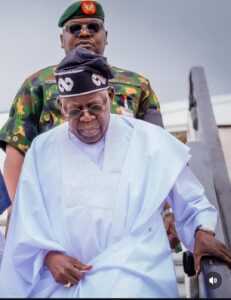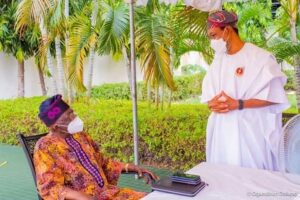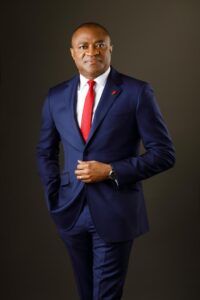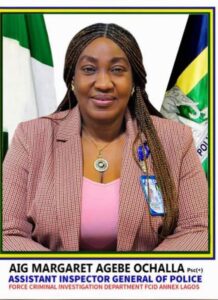The Battles of Ibadan in the June 12 Uprising By Owei Lakemfa
The bloody five-year pro-democracy uprising that forced the military back to the barracks after a cumulative 29-year military dictatorship began on Monday July 5, 1993. Hundreds of lives were lost. Some of the bloodiest battles were fought in Ibadan on Tuesday April 14 and Friday May 1, 1998.
Ibadan is the traditional capital of the West where after the stiff resistance against military rule in Lagos, the dictatorship sought to boost the planned transformation of General Sani Abacha into a civilian president.
In order to prolong himself in power, General Sani Abacha had unleashed an unprecedented reign of terror in the country. This included the establishment of killer squads which eliminated political activists like Mrs Kudirat Abiola and Bagauda Kaltho and ambushed others like Senator Abraham Adesanya and Mr. Alex Ibru. In seeking to eliminate pro-democracy leaders and perceived opponents in the military, he staged phantom coups and bombed buses mainly carrying soldiers. He also bombed military barracks like the Ikeja Military Cantonment and the Air Force Base, Lagos as well as a police station in Zaria. Abacha sent Ken Saro-Wiwa and eight other environmental activists to the gallows and forced many pro-democracy leaders like Professor Wole Soyinka and veteran nationalist, Chief Anthony Enahoro into exile.
Deluding himself that his rule can no longer be seriously challenged, he began the process of transforming himself into a civilian president by announcing a transition programme and registering five political parties which he funded and controlled, and they in turn, appointed him their sole presidential candidate. The pro-democracy leader, Chief Bola Ige described them as the “five leprous fingers” of the dictator.
Despite trying to run the country like a garrison, Abacha could still not command mass support so he began a process of funding mass rallies that would endorse him.
The main rally scheduled to endorse the dictator in the West was fixed for April 14, 1994 at the multipurpose Lekan Salami Stadium, Adamasingba, Ibadan, a sprawling 130,000 square kilometre complex that used to be the Ibadan Race Course. Chief Lamidi Adedibu, the strongman of Ibadan politics and Alhaji AbdulAzeez Arisekola Alao, the Aare Musulumi of Yorubaland were the major contractors for the ‘Two million-man’ rally.
The pro-democracy movement decided not just to ride on the back of the pro-Abacha event to stage an anti-Abacha rally, but also, if possible, to scuttle the former. Meetings were held in the home of Comrade Ola Oni, a dogged fighter for peoples’ liberation. It was a coalition of various groups including the National Democratic Coalition, NADECO, the Campaign for Democracy, CD, the Congress of Progressive Youths, COPY, the United Action for Democracy, UAD and the Joint Action Committee of Nigeria, JACON, a broad coalition of 26 groups including the popular Afenifere Movement. The Pro-Democracy groups in Lagos sent contingents of battle-tested youths especially from the Militant Mainlanders to reinforce their Ibadan comrades.
On the day of the rally, the stadium was full of hired people in festive mood complete with bands, local musicians, traditional masquerades and religious groups. Amassing outside the stadium were the anti-Abacha groups whose ranks began to swell with the arrival of groups who were trekking from various parts of the city.
As the Abacha-appointed Military Administrator of Oyo State, Colonel Ahmed Usman was addressing the rally in the stadium, the pro-democracy groups realised that they had far more people outside than the pro-Abacha rally inside, so they stormed the stadium in human waves sending Colonel Usman, Adedibu, Arisekola and their supporters in flight. The musicians abandoned their drums, the Jalaruru masquerade was trapped and the heavenly spirit begged for his life. The mass of hired Muslim groups Arisekola had brought, were cornered. The crowds sang for them: “Alasalatu ki le wa de bi?”(Prayer faithful what are you here for?” To which they danced and replied: “We came here to be mercilessly beaten.”
Unfortunately for Adedibu, as he fled through the city, he fell into the hands of pro-democracy youths and had to take shelter in the van of a private television station which in the process of trying to save the old politician’s life was damaged.
The seizure of the stadium and many parts of the city by the anti-Abacha protesters was short-lived as the regime mobilized soldiers backed by thugs to retake the places. When the soldiers got to the Wema Bank near the stadium, they started shooting at anything that moved. Within minutes they had shot dead three protesters and injured many.
JACON in reviewing the protest, declared May 1, 1998 as a national “Day of Action” against military dictatorship. It rejected Abacha’s planned transition to a civilian president, demanded the de-annulment of the June 12 Presidential elections, the release of Chief Moshood Kashimawo Abiola, winner of that election and his heading a “government of national unity”. Other demands included the release of all political prisoners and the unbanning of student, trade union and professional organisations.
Although it was a national protest, Ibadan became the epicentre as armed policemen and soldiers were unleashed on the city killing and maiming. The protesters retaliated by setting businesses and property of pro-Abacha campaigners on fire. This reportedly included the premises of the Monitor Newspapers owned by Arisekola with 11 cars in it and six cars and three houses belonging to Adedibu.
At least ten protesters were shot dead in Ibadan that day and many injured. The panicky Abacha regime in the next three days, ‘captured’ over 20 pro-democracy leaders in Ibadan including Dr. Ola Oni, former Governor Bola Ige, Comrade Moshood Erubami and Honourable Niyi Owolade. One of the prized captives was Lam Adesina, a former school principal and noted columnist who on the eve of the storming of the Lekan Salami Stadium had taken over the chairmanship of NADECO in Oyo State when the incumbent, Dr B.A developed cold feet.
The regime declared those arrested as “Prisoners of War” who can be summarily tried and imprisoned. But this was not to be as Abacha died on June 8, 1998 and the country breathed the air of freedom.
On May 29, 1999, Lam Adesina was sworn in as the elected Governor of Oyo State. I went on to join the Nigeria Labour Congress, NLC. When a Congress delegation visited Governor Adesina in Government House, the six footer on sighting me, wrapped his arms around me. He announced I was one of the leaders in Lagos who instructed them to storm the pro-Abacha rally in Ibadan. I promised to come see him. But I never did before he passed away on November 11, 2012. This Saturday is June 12, 28 years after the uprising began. As I reflect and recall people like Governor Lam Adesina and Comrade Ola Oni, ‘water run away me eye’







